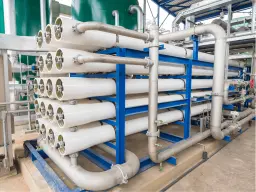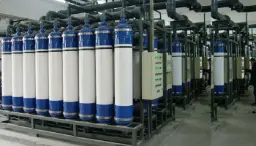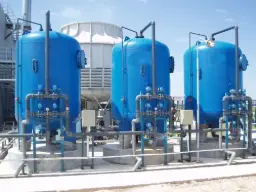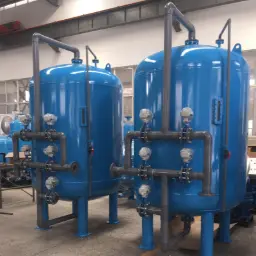Textile Washing and Rinsing Processes
Textile Washing and Rinsing Processes are fundamental yet resource-intensive stages of the textile value chain, sitting between weaving or knitting and downstream finishing. These operations remove natural impurities, residual sizing agents, spinning oils, and loose dyes while stabilising fabric hand feel. Every kilogram of cotton or synthetic substrate may consume 15 to 30 litres of process water before it reaches the finishing range, making water stewardship a top-priority KPI for mill managers. Water must dissolve detergents, disperse soil, transport heat, and finally leave the fabric chemically neutral so that no surfactant or hardness residue interferes with subsequent dyeing. Because the liquor ratio, line speed, and bath recirculation rate directly influence product quality, engineers design wash boxes and rinsing compartments to operate within tight temperature and conductivity ranges. If incoming utility water is inconsistent in hardness or microbial load, colour uniformity suffers and claims from buyers can escalate. Added to that, regulators worldwide now require strict effluent permits covering chemical oxygen demand and salinity, pushing mills toward in-house water recovery.
Continuous open-width ranges and rope washers use different hydrodynamic patterns, yet both must prevent fibre abrasion while still achieving high scour efficiency. Digital traceability programs launched by fashion brands increasingly demand audited data trails that prove each fabric metre was processed with minimal water and energy. Consequently, modern plants integrate advanced automation, membrane filtration, and cloud analytics to stay competitive. Sustainability certifications such as ZDHC Level 3 and ISO 14046 also elevate water treatment from a utility function to a reputational differentiator. The rise of recycled polyester, which carries oligomers and antimony catalysts, further complicates wastewater profiles. When mills plan expansions or retrofits, they often benchmark Scandinavian and Turkish best practices, where closed-loop rinse systems can reduce fresh water demand by up to 70%. In short, water treatment is not an optional add-on, but a critical backbone that unlocks throughput, compliance, and profitability in Textile Washing and Rinsing Processes.
Water Systems Used in Textile Washing and Rinsing
Water conditioning for textile scouring and rinsing must tackle suspended fibres, colloidal waxes, dissolved salts, and intermittent dye strikes. Engineers therefore draw from a toolbox of primary, secondary, and tertiary technologies, each optimised for specific contaminant classes and flow regimes. Pretreatment generally focuses on protecting membranes and heat exchangers from fouling, whereas polishing steps ensure that permeate recirculated to the washers meets strict conductivity and hardness limits. The choice of system depends on feed water seasonality, availability of municipal supply, and the mill’s zero-liquid-discharge (ZLD) ambition level. Highly alkaline scouring liquors loaded with wetting agents generate stable foams that ordinary gravity settlers cannot break, prompting designers to add coalescing lamella packs or dissolved-air saturators. Synthetic fibres introduce finely dispersed spin finish oils that demand hydrophobic adsorbents or enzymatic pre-hydrolysis. Where groundwater carries manganese or iron, aeration and sand filtration become indispensable to prevent yellowish stains on white shirting. Increasingly, facilities adopt Industry 4.0 platforms to model water balance scenarios and predict membrane replacement dates. Automation architectures interface variable-frequency pumps, ozone destruct units, and automatic back-flush valves under a common PLC or SCADA umbrella. This connectivity also feeds ESG dashboards used in corporate reporting. Below are core systems that feature prominently in high-performance Textile Washing and Rinsing Processes water-treatment trains:

Reverse Osmosis
Thin-film composite membranes reject dissolved salts, hardness ions, and low-molecular-weight organics, producing permeate with conductivity often under 30 µS/cm suitable for final-rinse make-up.

Ultrafiltration
Pressurised hollow-fibre or spiral-wound modules remove suspended solids, lint, and high-molecular-weight surfactants, yielding filtrate with turbidity under 1 NTU and SDI below 3 to protect downstream RO.

Water Softener
Sodium-form resin columns exchange calcium and magnesium ions, protecting steam boilers, heat exchangers, and preventing fabric chalk spotting when RO recovery is deliberately staged.

Activated Carbon Filters
Granular beds adsorb residual surfactants, phenolic dye carriers, and odorous compounds, polishing RO permeate before critical rinsing operations that demand zero amphiphilic residue.
Key Water-Quality Parameters Monitored
Reliable quality control for process water hinges on real-time analytics that mirror the complex chemistry of detergent baths and rinse cascades. Operators monitor multiple parameters in both makeup and recirculation loops, not merely to comply with standards but to fine-tune chemical dosing and heat recovery. Turbidity acts as an early-warning proxy for lint liberation while total organic carbon (TOC) reveals detergent breakthrough that could foam downstream. Conductivity readings inform automatic valve sequencing to maintain liquor ratios, and oxidation-reduction potential indicates biocide efficacy in lukewarm holding tanks. Spectrophotometric colour units quantify dye bleed-off during dark shade processing and allow adaptive rinse-step counts. Hardness, though largely removed by RO, is checked to avert calcium soap formation when fabric enters enzymatic bio-polishing. Chloride control is indispensable where stainless steel 304 piping risks pitting corrosion, especially in hot scouring circuits. pH tracking, meanwhile, ensures optimised enzyme activity and safe sewer discharge. Many mills run inline sensors directly connected to a plant historian as part of their digital twin strategy. Threshold-based alerts push to maintenance staff phones, reducing manual sampling. The table below summarises typical control envelopes and corrective measures used in modern Textile Washing and Rinsing Processes water treatment:
| Parameter | Typical Range | Control Method |
|---|---|---|
| Turbidity (NTU) | < 1 for RO permeate, < 5 for UF filtrate | Automated back-flush, coagulant trim |
| TOC (mg/L) | < 2 in final rinse, < 20 in UF feed | AOP intensification, detergent optimisation |
| Conductivity (µS/cm) | 20-50 permeate, 500-1 500 recirculation | Blend valves, RO pressure adjustment |
| pH | 6.5-7.5 before fabric entry | Caustic or acid dosing skids |
| Hardness (mg/L as CaCO₃) | < 5 in permeate, < 50 in boiler feed | Ion exchange regeneration control |
| Chloride (mg/L) | < 50 for stainless lines | RO recovery reduction, alloy upgrade |
| BOD (mg/L) | < 30 at sewer discharge | Biological MBR tuning, carbon source balance |
Design & Implementation Considerations
Sizing a water-treatment plant for Textile Washing and Rinsing Processes requires a holistic mass-balance that reflects not only average flow but minute-to-minute spikes during batch changes. Engineers first calculate specific water consumption per kilogram of fabric, then multiply by projected loom output and buffer storage volume. Safety factors consider evaporation losses in tenter frames and unexpected hose wash-downs. Material selection leans towards AISI 316L for hot alkaline circuits, whereas UPVC or PP-H piping suffices for ambient permeate loops. Designers plot piping-and-instrumentation diagrams (P&IDs) with clear node tags, redundancy paths, and hygienic dead-leg avoidance. Pressure sensors upstream of membrane banks allow differential measurements that drive automatic clean-in-place (CIP) sequences. Control narratives specify proportional-integral loops for conductivity-based valve modulation, ensuring rinse-box overflow coincides with lowest permeate cost. International frameworks such as ISO 22000 for food-grade factories can inspire hazard analysis thinking, and the World Health Organization’s Water Safety Plan principles guide risk prioritisation. Where mills export to the United States, FDA 21 CFR Part 110 indirect food contact rules influence gasket materials, while NSF/ANSI 61 certification may be required for potable contact points. Advanced projects incorporate variable-speed drives to trim pump energy by up to 25 % during partial load. Heat exchanges from hot wastewater to cold incoming soft water raise thermal efficiency and shrink boiler gas demand. Digital twins built in software like Aspen Plus or Simulink replicate dynamic mixing and allow what-if analyses for recipe changes. During commissioning, acceptance tests verify not only flow and pressure but spectral colour removal at specified detergent loads. Finally, the site’s environmental impact assessment should integrate regional water-scarcity indicators and social-license stakeholder feedback.
Operation & Maintenance
The operational heartbeat of a textile water-treatment facility depends on disciplined preventive maintenance, detailed standard operating procedures, and skilled personnel. Daily routines start with sensor sanity checks, calibration drift review, and inspection of chemical-feed dosing pumps for stroke consistency. Weekly tasks include UF back-pulse efficacy verification, RO permeate conductivity trend analysis, and desludging of DAF float boxes. Clean-in-place cycles are typically triggered when UF trans-membrane pressure rises by 0.3 bar or RO normalised flux drops by 10 %. Chemical selection for CIP must account for textile surfactant residues; alkali cleaners with sequestering agents are alternated with low-pH citric acid soaks to dissolve scale. Membrane replacement life in harsh mixed-fibre plants averages 24-30 months, though online micro-bubble cleaning can add another quarter. A structured spare-parts strategy keeps critical components such as high-pressure pump seals, pH electrodes, and PLC I/O cards in stock, mapped to mean time to repair and supplier lead times. Operator competencies extend beyond mechanical aptitude to include understanding of chemical equilibria, digital dashboards, and confined-space rescue. Cross-training between treatment and dye-house teams ensures coherent decision-making when sudden pH excursions occur. Remote monitoring portals allow OEMs to push firmware updates and suggest predictive interventions ahead of unplanned shutdowns. Energy audits every six months quantify specific kWh per cubic metre treated, driving VFD tuning and heat-pump integration projects. Safety is reinforced through lockout-tagout checklists and emergency eyewash stations near acid dosing totes. Finally, continuous improvement meetings, supported by key performance indicators such as water-reuse ratio and membrane cleaning chemical intensity, foster a culture of data-driven optimisation.
Challenges & Solutions
Despite technological advances, Textile Washing and Rinsing Processes still confront several persistent challenges that jeopardise uptime and compliance. Scaling from calcium carbonate or silicon dioxide precipitates remains a prime culprit when process water encounters variable well-water feeds. Bio-fouling flourishes in lukewarm rinse loops rich in detergent residues, degrading odour and colour and clogging nozzles. Regulatory hurdles intensify as discharge limits tighten for colour, salinity, and microplastic fibres, exposing older mills to penalties or forced capacity throttling. Additionally, variable influent temperature during seasonal transitions shocks biological stages, causing carbon removal efficiency swings. Below, practical mitigation steps demonstrate how forward-thinking plants overcome these obstacles:
- Scaling – Deploy antiscalant dosing tied to ion-selective monitoring and maintain cyclical acid CIP to dissolve nascent crystals before they harden.
- Bio-fouling – Use side-stream ozonation or UV-C reactors combined with periodic high-temperature sanitisation to disrupt biofilm matrixes without halting production.
- Regulatory hurdles – Implement modular polishing AOP and ion-exchange desal modules that can be incrementally added as discharge limits evolve, preserving capital flexibility.
Advantages & Disadvantages
Choosing an integrated water-treatment strategy for Textile Washing and Rinsing Processes yields wide-ranging benefits but also introduces certain trade-offs. The following analysis helps decision-makers weigh investment options:
| Pros | Cons |
|---|---|
| Significant water-reuse potential, cutting freshwater intake by 60-80 % | High capital expenditure, especially for multi-stage RO and AOP |
| Improved fabric quality through consistent low-hardness rinse water | Increased operator training requirements for sophisticated control systems |
| Lower effluent fees and easier compliance with colour and salinity standards | Membrane fouling risk demands disciplined chemical and mechanical maintenance |
| Energy savings from heat-exchange integration reduce steam demand | DAF and MBR produce sludge that requires dedicated handling and disposal |
| Enhanced sustainability credentials attract brand orders and ESG investment | Complex P&ID may complicate troubleshooting for small maintenance teams |
Frequently Asked Questions
Before implementing or upgrading a water-treatment facility for Textile Washing and Rinsing Processes, plant personnel frequently seek clarifications. The following answers address common concerns:
Q1. What permeate conductivity is safe for final rinses of reactive-dye cotton?
A1. Most mills target below 30 µS/cm to prevent re-deposition of salts that cause dull shades, though values up to 50 µS/cm can work with lighter colours.
Q2. How often should RO membranes be chemically cleaned in textile applications?
A2. With proper pretreatment and antiscalant control, CIP every 8-12 weeks is typical, but trend monitoring should trigger earlier if flux decline exceeds 10 %.
Q3. Does recycled polyester washing require different treatment chemistry?
A3. Yes, oligomer and catalyst leaching increases TOC and antimony, so stronger oxidative polishing such as ozone-UV AOP is recommended.
Q4. Can I achieve zero-liquid-discharge (ZLD) without evaporators?
A4. It is possible for certain product mixes by maximising RO recovery and salt crystallisation, but high-salinity streams usually still need thermal evaporators.
Q5. What international standards govern water contact with fabrics meant for baby garments?
A5. ISO 22000 for hygiene management and OEKO-TEX Standard 100 annex 4 parameters guide material safety, while NSF/ANSI 61 may apply to potable rinses.
Q6. How does digitisation reduce operating cost?
A6. Cloud dashboards and machine-learning models predict membrane fouling, enabling just-in-time chemical ordering and avoiding production downtime penalties.
Q7. Are enzymatic cleaners safe for membranes?
A7. Enzyme-based formulations targeting protein soils can be used on UF membranes made of PES or PVDF, provided the pH and temperature are within manufacturer limits.